The Rockchip Developer Conference that took place at the end of November 2020 allowed us to learn more about RK3588, RK3566, and RK3568 64-bit Arm processors for AIoT applications.
But the company also presented additional details about camera SoC’s, namely the dual-core RV1109 and quad-core RV1126, equipped with a 1.2 TOPS and 2.0 TOPS respectively, and both capable of delivering a 250ms fast boot.
Rockchip RV1109 and RV1126 share many of the same specifications:
- CPU
- RV1109 – Dual-core Arm Cortex-A7 @ 1.5 GHz + RISC-V MCU @ 400 MHz
- RV1126 – Quad-core Arm Cortex-A7 @ 1.5 GHz + RISC-V MCU @ 400 MHz
- GPU – 2D graphics engine
- NPU
- RV1109 – 1.2 TOPS with support for INT8/ INT16
- RV1126 – 2.0 TOPS with support for INT8/ INT16
- Memory – 32-bit DDR3/DDR3L/LPDDR2/LPDDR3/DDR4/LPDDR4 up to 4GB RAM
- Storage – eMMC 4.51, Serial SPI NOR Flash or NAND flash with fast booting support, SD card via SDIO interface
- Display – MIPI-DSI/RGB interface up to 1080p @ 60 FPS
- Audio – 8-ch I2S with TDM/PCM, 2-ch I2S
- Multi-Media
- RV1109 – 5M ISP 2.0 with 3F HDR (Line-based/Frame-based/DCG)
- RV1126 – 14M ISP 2.0 with 3F HDR (Line-based/Frame-based/DCG)
- 2x MIPI CSI, LVDS, sub-LVDS
- DVP interface with BT.656/BT.1120
- 5M (RV1109) or 4K (RV1126) H.264/H.265 video encoder up to 3840 x 2160 @ 30 fps + 720p @ 30 fps encoding
- 5M (RV1109) or 4K (RV1126) H.264/H.265 30fps video decoder up to 3840 x 2160 @ 30 fps encoding + 3840 x 2160 @ 30 fps decoding support
- Networking – RGMII interface with TSO network acceleration
- USB – USB 2.0 OTG and USB 2.0 host
- Other Peripherals
- Dual SDIO 3.0 interface for Wi-Fi and SD card
- I2C, UART, SPI. PWM, ADC interfaces
- Process/Package – SMIC 14nm process, FCCSP 0.65; 409-pin; 14 x 14mm
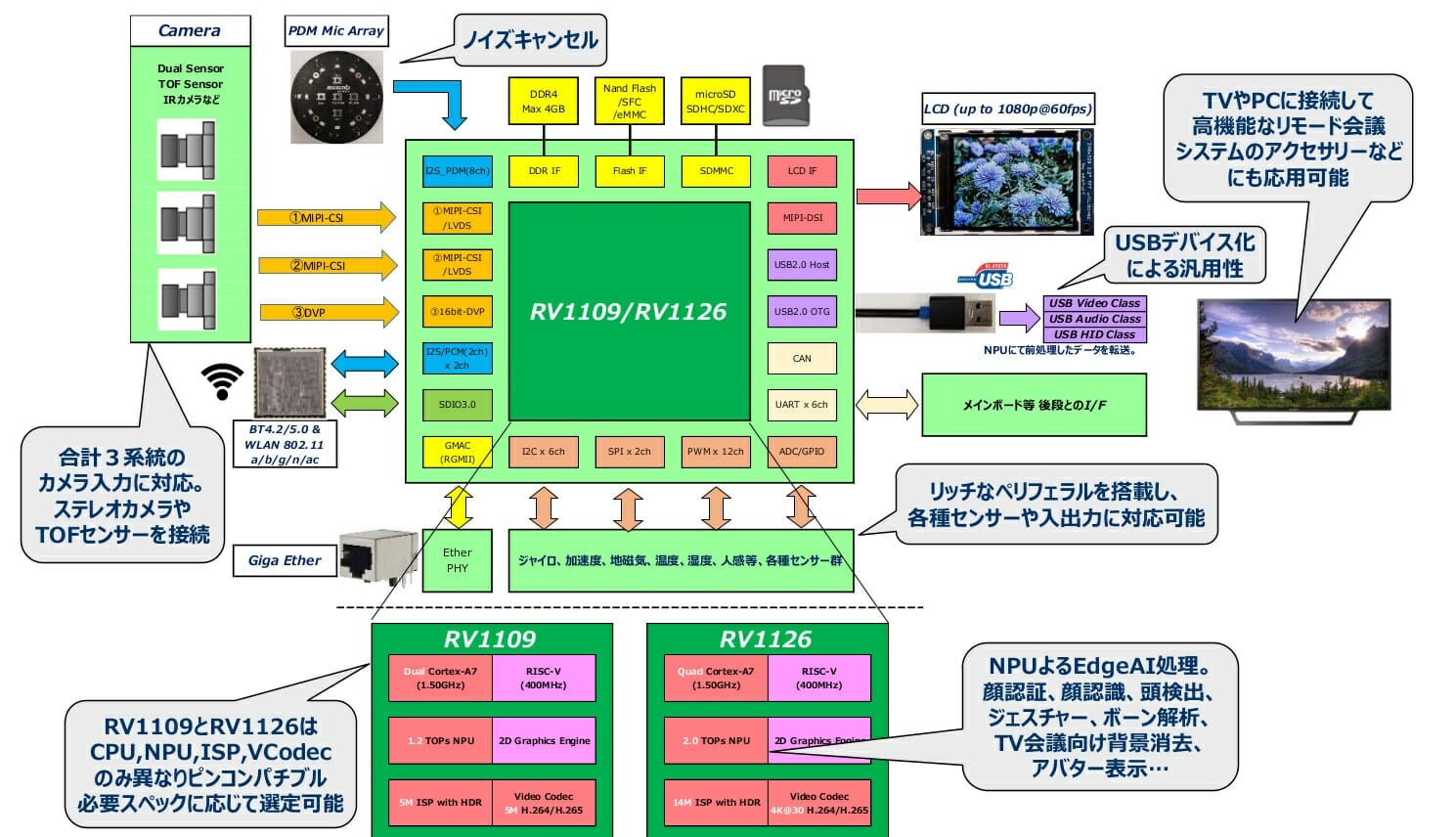
I got the information from a PDF file hosted on Sanshin Electronics website, as the Rockchip website only has limited information. You’ll find download links and passwords for the Linux SDK documentation, and application notes to work with the camera drivers and NPU on CSDN. Rockchip RK1109 and RK1126 do not seem to be mentioned on Rockchip open-source website, nor the related Github account, except for the RKNN toolkit used for the NPU.
Rockchip RV1126 EVB V13 can help with evaluation and early development, but I could only find limited information including a boot log showing it running Linux 4.9.111. The evaluation board can apparently be purchased on Aliexpress or Rutronik24 for around $700.
If you’d like to play around with RV1126 hardware without spending several hundred Euros, I also noticed the Longse RL800 IP camera whose night-time video sample is shown above. The camera combines a Rockchip RV1126 processor with an 8MP Sony IMX415 1/2.8″ sensor and comes with an SD card slot, a built-in microphone, Ethernet, and PoE power. The description also mentions it supports “Smart Analytics” with human body intrusion, line crossing, group detection, and more. I could not find the model for sale, but you may check out Longse website, and inquire about the RL800-series cameras, or other RV1126 products they may have.
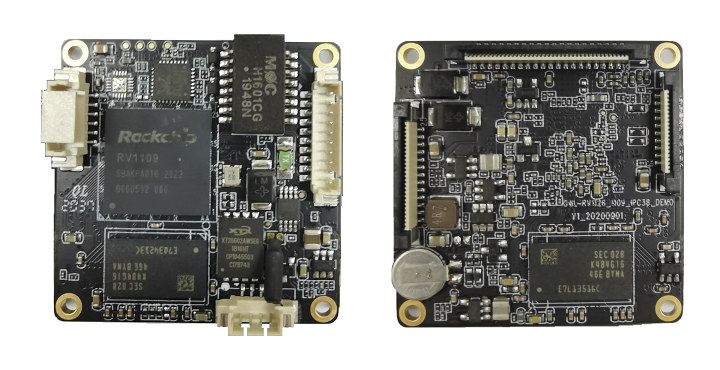
One more option I have found is the Think Core TC-RV1126/1109 embedded module sold on DIYtrade for $135 per unit for a minimum order of 10,000 units. There are additional details about the module/devkit on the actual product page, just make sure you are patient as the page may take a long time to load (we are talking minutes here).
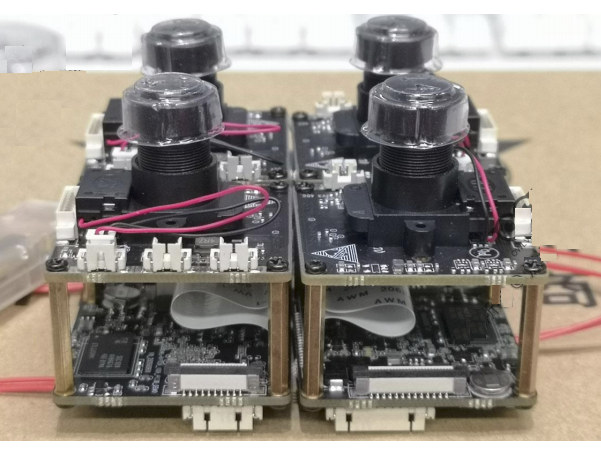
Some of the features are very similar to Reolink RLC-810A IP camera which I reviewed a few months ago, so maybe a teardown is in order….

Jean-Luc started CNX Software in 2010 as a part-time endeavor, before quitting his job as a software engineering manager, and starting to write daily news, and reviews full time later in 2011.
Support CNX Software! Donate via cryptocurrencies, become a Patron on Patreon, or purchase goods on Amazon or Aliexpress. We also use affiliate links in articles to earn commissions if you make a purchase after clicking on those links.


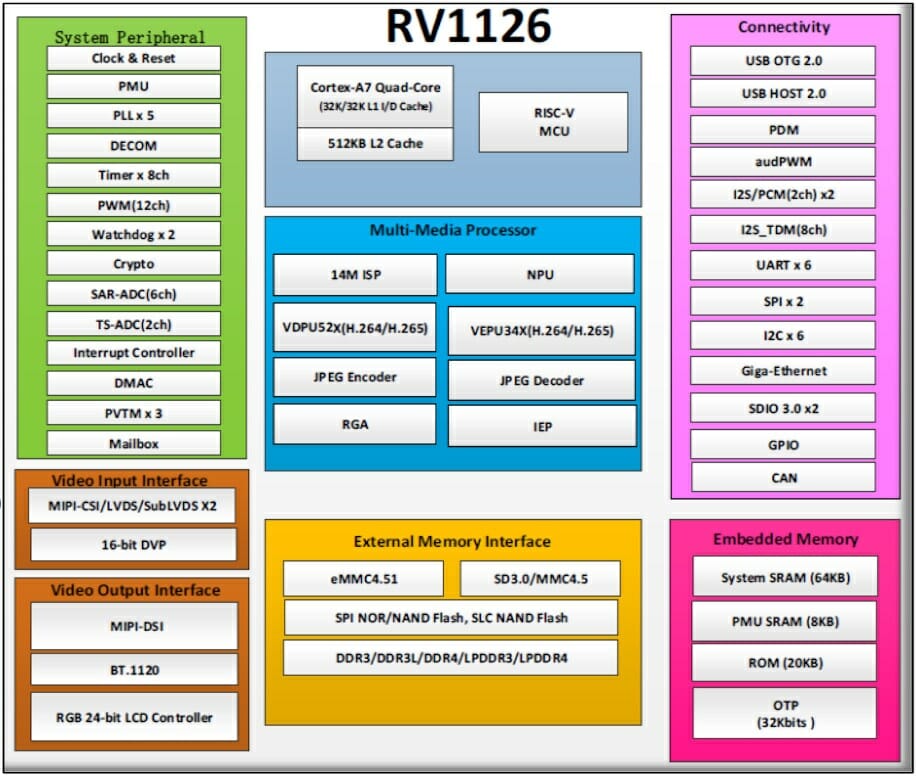
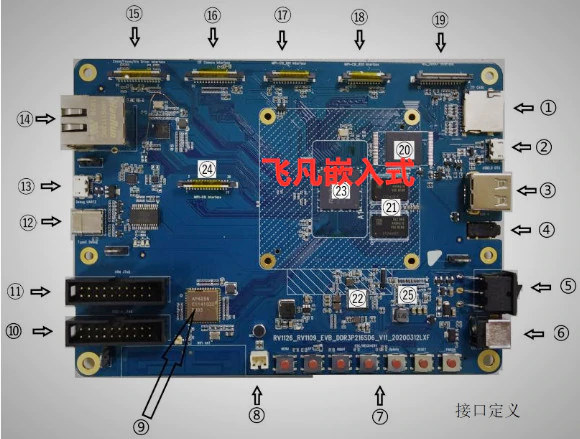



I don’t know if it really boots in 250 ms but the boot log you linked to showed 1.37s for u-boot and 1.57 for the kernel, so that’s 2.94s, or 12 times more. Not that it’s huge, just that the gap between the observed and the advertised values looks hard to bridge.
I think Sipeed is building a MAX_III using RV1126, https://twitter.com/SipeedIO/status/1344600478559059968/photo/1
Yes, I’ve just realized that. That will probably be the most affordable option, just need to be patient.
is this SOM price real?
https://detail.1688.com/offer/635498244746.html?spm=a26352.13672862.offerlist.102.423435d3mxZ37x
How about this SOC price? real?
https://detail.1688.com/offer/637341542619.html?spm=a26352.13672862.offerlist.21.423435d3mxZ37x
This price is a steal.
I am skeptical because the RK1108 is ¥ 70.00
This might be usable for $46 (¥ 299.00)
https://detail.1688.com/offer/631258766682.html?spm=a26352.13672862.offerlist.62.423435d3mxZ37x
I wish the browser people and the camera people would agree on a successor to H.264. Chrome/Firefox only support AV1 and the cameras only support H.265, and I don’t want to transcode everything.
Due to AV1 avoid IP licensing
The IP licensing on h.265 is ridiculously high. It you actually paid everything everyone is asking (most companies don’t) it would cost about $15/camera in patent royalties. There are a lot of people making dubious patent claims on h.265. But if they target you, you have to pay or spend millions fighting in court. Of course this does not impact internal China which simply ignores all of the royalties.
Also note that for 1080P h.264 actual performs slightly better than h.265. You only see the difference at 4K.
BTW, the chip manufacturers pay nothing for h.264 or h.265 royalties. The royalties are applied when you turn it into a “branded” good. That becomes a hot potato with companies outside of the US saying the Chinese firm applied the ‘branding’ and the Chinese companies claiming the opposite. Of course it is always the company outside of China that gets sued.
Even if the (mostly Chinese) camera companies don’t respect the H.265 licensing, I’d expect they’d care about it actually working with browsers. Is there something stopping them from implementing AV1?
I don’t know if IP blocks with AV1 support are cheaply available for ARM SOCs. This is something that has to be built into the SOC silicon.
This is the only AV1 IP I see for sale in the market. No clue how much it costs.
https://www.allegrodvt.com/video-ip-compliance-streams/video-silicon-ip-cores/ip-encoder-av1-4k/
14nm Cortex-A7? I see this was already mentioned in roadmap a year ago, but I missed it back then. I’m actually not aware of any Cortex-A7 made in anything other than 45nm/40nm or 28nm, and did not expect it to ever make it to a smaller process.
The fact that this exists at all probably means two things:
Are there any other examples of Cortex-A7 cores in 22 or 14nm?
Could it also be the Chinese government sponsoring manufacturing through SMIC most advanced process?
>Are there any other examples of Cortex-A7 cores in 22
A bunch of the SigmaStar A7 chips with AI hardware are 22nm according to this list:
http://bbs.16rd.com/thread-568161-1-1.html
Thanks for the link! They seems to follow the same pattern: RV1108 and SCC333/5 are 28nm camera SoCs based on Cortex-A7 with no NPU, while the later RV1109 and SCC336/8/9 have an NPU and are produced on a smaller process.
Your link also mentions Hisilicon chips and I see that Hi3516d and Hi3558 are other examples of Cortex-A7 based camera chips with NPU, but I could not find out anything about the process other than one article saying that they are in a product family that uses 12nm to 28nm.
Another thought: If there are four or more SoC manufacturers (Hisilicon, SigmaStar, Rockchips, Allwinner, any others?) that produce chips with extremely similar high-level specs such as this 4xCortex-A7+NPU+ISP+MCU+I/O camera SoC, it would suggest that they are not actually trying to compete on features but just try to offer drop-in replacements with an identical feature set at the absolute lowest cost. Using a “better” CPU core would be counterproductive here, but going to a smaller node may help with cost.
I think it is like you said: They aren’t trying to out tech each other. They are just saying “Look we have the same spec and it’s a few cents cheaper”. I think SigmaStar are even bragging that their chips are pin compatible with the hisilicon ones.. unless google translate is totally off.
Which is a good thing I think as it means there are going to be ton of cheap Cortex A7 SoCs in packages that are good for 2 layer PCBs for makers.
I wouldn’t have imagine a dual A7 in a 68 pin package would ever exist but apparently it does now.
What might also be interesting is how fast these 22nm A7s can go. I think Willy said he managed to get the MSC313E up to just under 1.5GHz.
I ordered some of the solder down modules ages ago from taobao and they still haven’t been shipped yet. 🙁